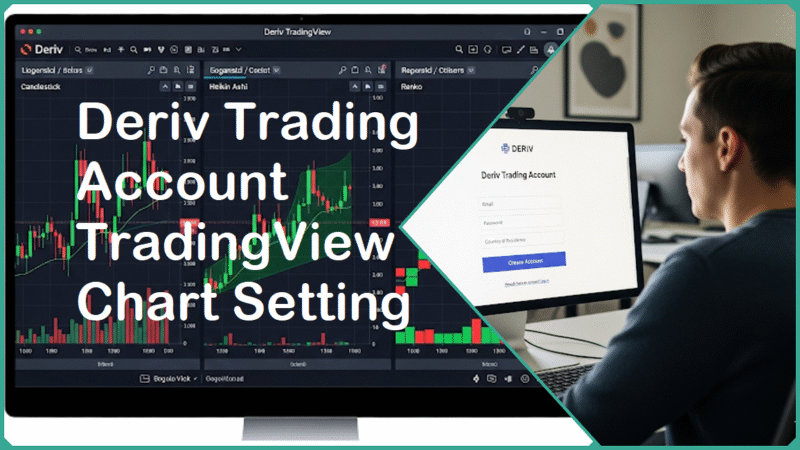Analyzing the XAUUSD Live Chart TradingView for High ROI
Estimated reading time: 24 minutes
Gold trading, symbolized as XAUUSD, represents the exchange rate of gold priced in US dollars. It is a popular asset among traders due to its historical role as a haven in times of economic uncertainty and its dynamic price movements. TradingView, a premier charting platform, offers a powerful toolset to analyze the XAUUSD live chart with precision and actionable insights.
Understanding how to analyze the XAUUSD chart effectively on TradingView can unlock numerous opportunities for achieving higher returns on investment (ROI). Still, it requires much more than simply watching price movements. Developing a comprehensive approach that includes technical indicators, trend analysis, and market sentiment is essential for making informed trading decisions and maximizing potential profits.

This post is designed to guide beginner to intermediate traders through a comprehensive and practical step-by-step methodology for effectively analyzing this instrument on TradingView. It will explore a variety of key indicators, essential chart patterns, proven trading strategies, and important risk management techniques. By following this detailed approach, traders can significantly improve their ability to make informed decisions and optimize their overall trading outcomes in the market.
What is the XAUUSD Live Chart on TradingView?
The XAUUSD live chart on TradingView is a highly dynamic and interactive tool that offers real-time and continuously updated price data of gold priced in US dollars. It enables traders and investors to visually analyze intricate gold price movements across a wide range of timeframes, spanning from very short intervals measured in minutes to extended periods covering several months.
This extensive versatility makes the chart an excellent resource for a variety of trading styles, catering to both active day traders seeking quick market insights and long-term investors focused on broader market trends and strategic planning.
Key features of the XAUUSD chart on TradingView include several essential tools and indicators that provide comprehensive insights into the gold versus US dollar market. These features encompass;
- Customizable Technical Indicators: Users have the flexibility to add and fine-tune a wide range of popular technical indicators such as moving averages, Relative Strength Index (RSI), Moving Average Convergence Divergence (MACD), Bollinger Bands, and many more. These tools help traders and analysts thoroughly examine price trends, momentum shifts, and market volatility, allowing for more informed trading decisions and strategy development.
- Drawing Tools: Traders can mark important technical indicators such as support and resistance levels, trend lines, Fibonacci retracements, and various chart patterns directly on the chart. These tools are designed to help traders perform more detailed and effective technical analysis by visually identifying key price points and trends within the market. This enhanced functionality allows traders to make more informed decisions based on clear graphical representations of market data.
- Alert Functions: TradingView provides the ability to set customizable alerts based on specific price levels or particular indicator conditions. This feature is incredibly useful for traders, as it allows them to stay updated and informed about important market movements without the need to constantly monitor the charts in real-time. These alerts can be tailored to suit individual trading strategies and preferences, ensuring that traders never miss critical opportunities or changes in market behavior.
- Multi-Timeframe Analysis: The platform offers robust support for viewing and comparing price action across multiple timeframes all at once. This capability is incredibly important and valuable for traders as it allows them to confirm trends with greater confidence and accuracy. Additionally, it helps in precisely fine-tuning entry and exit points, ensuring more strategic and informed trading decisions.
Together, these advanced features empower traders to gain a thorough understanding of market dynamics, enabling them to make well-informed and strategic decisions. This, in turn, helps optimize their overall trading strategies and enhances the potential for achieving a higher return on investment.
As a result, the live chart transforms into an absolutely indispensable and highly invaluable asset that plays a crucial role in effectively analyzing the XAUUSD market in real time with precision and accuracy.
Essential Technical Indicators for XAUUSD
Essential technical indicators for analyzing the XAUUSD live chart on TradingView play a critically important role in thoroughly understanding the complex movements of gold prices and making well-informed, strategic trading decisions.
These indicators help traders gain valuable insights into market trends, price momentum, and potential reversal points. Here are the key indicators explained in detail, along with their significance and practical application in trading gold effectively:
Moving Averages (MA)
- Types: Simple Moving Average (SMA) and Exponential Moving Average (EMA)
- Purpose: Smooth out price data to highlight the direction of the trend and reduce noise from random price fluctuations.
- Common Usage: The 50-day and 200-day MAs are widely used benchmarks. When the shorter-term MA (like the 50-day) crosses above the longer-term MA (200-day), called a “golden cross,” it signals a potential bullish trend. Conversely, when it crosses below, known as a “death cross,” it indicates bearish momentum.
- Practical Benefit: Helps traders identify the overall market trend and potential long-term shifts in price dynamics.
Relative Strength Index (RSI)
- Scale: Ranges from 0 to 100.
- Purpose: Measures the speed and magnitude of recent price changes to identify overbought or oversold conditions.
- Key Levels:
- An RSI above 70 suggests that XAUUSD may be overbought, hinting at a possible price reversal or pullback.
- An RSI below 30 indicates oversold conditions, which could represent a buying opportunity.
- Additional Insight: Divergences between RSI and price movements often precede trend reversals, offering early signals.
Moving Average Convergence Divergence (MACD)
- Function: Tracks the relationship between two EMAs (usually 12-day and 26-day) and plots a MACD line and a signal line.
- Buy Signal: Occurs when the MACD line crosses above the signal line, indicating increasing bullish momentum.
- Sell Signal: Occurs when the MACD line crosses below the signal line, suggesting bearish momentum.
- Usefulness: Assists in spotting momentum shifts and timing entries or exits.
Bollinger Bands
- Components: A moving average in the center, with upper and lower bands set a standard deviation apart.
- Interpretation:
- When price touches or breaches the bands, it may signify overextended conditions in either direction, signaling potential reversals.
- Band contractions indicate low volatility, often preceding breakout movements.
- Utilization: Bollinger Bands help in gauging volatility and spotting breakout or reversal opportunities.
Volume Indicators
- Importance: Volume confirms the strength of a price move.
- Application: A price advance or decline accompanied by high volume is more reliable and likely to continue than one with weak volume.
- Example: A breakout from a resistance level on strong volume signals genuine buying interest, increasing the odds of a sustained move.
These indicators collectively offer a comprehensive and versatile toolkit for thoroughly analyzing XAUUSD on TradingView, empowering traders to accurately interpret various aspects such as price trends, momentum shifts, market volatility, and overall market strength with greater precision and confidence.
TradingView Practical Application: Step-by-Step Guide
Here is a detailed and practical, step-by-step guide designed specifically for analyzing the XAUUSD live chart on TradingView, aimed at helping traders execute high-ROI trades with greater accuracy and confidence:
Step 1: Select Your Timeframes
Begin by analyzing multiple timeframes simultaneously to obtain a much clearer and more comprehensive picture of the market’s overall behavior and trends. This approach allows you to see both the bigger long-term movements and the short-term fluctuations, providing a deeper understanding of the market dynamics.
- Use higher timeframes like the daily and weekly charts to determine the overall trend direction.
- Use shorter timeframes, such as the hourly and 15-minute charts, to find precise entry and exit points.
This multi-timeframe analysis significantly enhances the accuracy and reliability of your trade setups by effectively aligning short-term trading actions with the broader, long-term market trends. By integrating multiple time horizons, it allows you to make more informed and confident trading decisions that are consistent with overall market momentum.
Step 2: Identify the Trend Using Moving Averages
Apply moving averages, such as the commonly used 50-period Exponential Moving Average (50 EMA) and the widely recognized 200-period Simple Moving Average (200 SMA), to the chart for a clearer analysis of trends and potential support or resistance levels.
These moving averages help smooth out price data over different time frames, providing valuable insights into the market’s momentum and overall direction.
- If the price is consistently above both, it signals a bullish market.
- Look for crossover patterns, such as the golden cross (short-term MA crossing above long-term MA) for buy signals or the death cross for sell signals.
Additionally, plot and thoroughly analyze support and resistance zones, which are key price levels where the market has historically shown a tendency to reverse direction or consolidate for a period of time.
These zones serve as important indicators for potential price movement, helping traders identify areas where buying or selling pressure has previously been strong enough to halt or reverse trends. Understanding these zones can provide valuable insights into market sentiment and assist in making more informed trading decisions.
Step 3: Use RSI and MACD for Momentum and Confirmation
Monitor the Relative Strength Index (RSI) and Moving Average Convergence Divergence (MACD) indicators closely to effectively confirm and validate momentum shifts in the market. These tools are essential for identifying changes in price trends and potential reversals.
- An RSI dropping from above 70 alongside a bearish MACD crossover can confirm a sell signal.
- Conversely, an RSI rising from below 30 with a bullish MACD crossover signals potential buying strength.
Step 4: Watch Bollinger Bands for Volatility Breakouts
Observe the Bollinger Bands to effectively gauge and analyze changes in market volatility over time. These bands provide valuable insights into the fluctuations and dynamics of price movements.
- When the bands contract tightly, it typically precedes a significant price move.
- A breakout outside the bands signals a potentially strong move, but always confirm this breakout using other indicators before acting.
Step 5: Confirm with Volume
Carefully check and analyze volume levels to accurately validate the strength and reliability of ongoing trends as well as breakout moves in the market. This detailed assessment helps confirm whether the price movement is supported by sufficient trading activity, ensuring more confidence in the trend’s sustainability and potential continuation.
- A spike in volume accompanying a breakout or price move adds credibility to the signal, increasing the likelihood of a sustained move.
Step 6: Plan Entry, Stop Loss, and Take Profit
Carefully and meticulously plan each of your trades to effectively manage and minimize potential risks involved in the trading process:
- Use support and resistance levels or Fibonacci retracement zones to set precise entry points and targets.
- Protect your capital by risking only 1-2% of your trading account per trade.
- Always set a stop-loss order to limit downside risk if the market moves against your position.
This stepwise approach, which thoughtfully combines comprehensive trend analysis, momentum confirmation, detailed volatility assessment, volume validation, and prudent risk management on TradingView, equips traders with a highly robust and reliable framework.
This comprehensive framework enables traders to engage in XAUUSD trading more effectively and efficiently, allowing them to navigate the market with a much higher level of confidence and assurance in their decision-making process. By using this approach, they can make well-informed decisions that enhance their overall trading performance and reduce uncertainty.
Advanced Strategies and Insights
Here are several advanced strategies and valuable insights specifically designed for trading XAUUSD on TradingView, aimed at significantly enhancing your trading precision and potentially boosting your return on investment to a greater extent:
Discount Entry Strategy
Instead of constantly chasing after price peaks that may be short-lived or unpredictable, it is much more effective to focus on identifying “discount” entry points. This approach involves looking to enter trades at retracement levels within an overall uptrend.
By doing so, you position yourself to benefit from much better risk-reward ratios, as entering at these pullbacks often allows for a more favorable entry price and reduced downside risk compared to buying at the peak.
- Step back to higher timeframes, such as daily or weekly charts, to confirm the institutional directional bias — essentially identifying where large players are positioned.
- Then, use the 4-hour chart to time entries when the price approaches significant support levels or retracement zones aligned with the trend.
This particular approach effectively avoids the common mistake of purchasing assets at market peaks, often referred to as “premium entries,” which can lead to higher risks and lower returns. Instead, it enhances the likelihood of success by strategically entering positions when prices are near significant “discounts,” thereby capitalizing on more favorable price points that offer greater growth potential.
Chart Patterns
Recognizing classic bullish patterns on TradingView’s charts can significantly enhance and improve your trade decision-making process more effectively and confidently. Some of the most common and important bullish patterns to watch for include:
- Flags: Small consolidations that follow a strong trend, indicating continuation.
- Wedges: Patterns signalling trend reversals or continuation, depending on location.
- Double Bottoms: A strong reversal signal after a downtrend.
- Cup and Handle: A bullish continuation pattern showing a period of consolidation followed by a breakout.
A trade becomes significantly higher in probability and much more reliable when a breakout candle successfully closes above the critical neckline or boundary level in bullish patterns, or conversely, closes below this important level in bearish patterns.
This confirmation provides a much stronger sense of confidence that the observed price movement is authentic and reliable, rather than being a misleading false breakout. As a result, it significantly enhances the probability of executing a successful and profitable trade.
Automated Strategies on TradingView
TradingView supports Pine Script, which is its own proprietary scripting language designed specifically for traders. This powerful language enables traders to create fully automated trading strategies tailored to their individual needs.
Additionally, Pine Script allows users to backtest these strategies extensively by using comprehensive historical market data, helping them to evaluate performance and optimize their trading approaches before applying them in real-time trading environments.
- Many strategies combine indicators like EMA, RSI, and Bollinger Bands to generate automatic buy/sell signals and manage risk parameters (stop loss and take profit).
- Automated systems can improve discipline by reducing emotional decision-making and providing consistent application of trading rules.
However, manual oversight remains absolutely crucial because fully automated strategies might often overlook the broader market context, including sudden changes in volatility and unexpected news events that can significantly impact trading outcomes.
Successful traders generally achieve the most outstanding results by skillfully blending advanced automation tools with a profound, real-time understanding of the constantly changing market dynamics. This combination allows them to swiftly adapt and respond to rapidly evolving conditions, ensuring they stay ahead of market fluctuations and make well-informed decisions under pressure.
In Summary
These advanced approaches, when carefully and thoughtfully integrated into a trader’s overall strategy, provide traders with a highly robust and reliable framework for entering trades at the most optimal points in the market.
They also enable traders to recognize and interpret key market patterns with greater accuracy, while leveraging cutting-edge technology to backtest historical data and automate trading strategies efficiently. This combination ultimately results in a more disciplined, systematic, and potentially profitable gold trading journey over time.
Current Trends in XAUUSD Trading
Current trends in XAUUSD trading throughout 2025 exhibit a complex interplay of various macroeconomic factors combined with technical indicators, all of which are significantly influencing the movements and fluctuations in gold prices.
These elements together create a dynamic environment that traders and investors closely monitor to make informed decisions regarding gold trading strategies.
Federal Reserve Interest Rate Policies
The Federal Reserve’s monetary policy stance has a significant and direct influence on gold prices in the financial markets. When the Fed adopts a hawkish approach, which involves signaling intentions to raise interest rates or maintain them at higher levels for an extended period, this typically exerts downward pressure on gold prices.
The reason behind this is that higher interest rates increase the opportunity cost of holding assets like gold, which do not generate any yield or interest income. On the other hand, when the Federal Reserve signals an easing of monetary policy or the likelihood of future rate cuts, this tends to support and boost gold prices by lowering the opportunity cost associated with owning non-yielding assets such as gold.
Geopolitical Risks
Ongoing and escalating geopolitical conflicts, along with persistent trade tensions between major global economies, have continued to keep the demand for gold as a reliable and trusted safe-haven asset significantly elevated.
These widespread uncertainties and unpredictable developments in international relations consistently drive investors and market participants toward gold, which is widely regarded as a protective store of value. This strong preference for gold helps to support and stabilize its price during periods of financial turbulence and economic instability.
Economic Data
Inflation continues to be a highly significant and influential factor driving market dynamics. Gold’s established role as a reliable hedge against inflation means that any increase in inflationary pressures tends to enhance its attractiveness to investors.
Recent inflation reports, along with a wide range of economic data releases, play a critical role in shaping trader sentiment and can strongly influence gold’s short-term price movements and overall market direction.
Technical Analysis
Indicators currently suggest that the momentum for XAUUSD could be weakening somewhat in the short term. The Relative Strength Index (RSI) is indicating a neutral to mildly bearish sentiment at this point, reflecting a cautious market stance. The price action reveals important support levels in the range of approximately $2,530 to $2,500, which traders are closely watching.
On the upside, there is a notable and significant resistance level around the $2,900 mark, which traders should pay close attention to. These critical support and resistance levels create distinct and well-defined trading zones that can be strategically utilized for making well-timed and informed entries and exits in the market, helping to optimize trading decisions and improve overall performance.
Price Levels
Recent movements in gold prices have consistently hovered near these crucial technical levels, exhibiting a heightened sensitivity to both fundamental news events and shifts in investor flows. The support and resistance found around these key zones provide traders with valuable and actionable reference points to strategically plan their entries, stop-loss placements, and profit targets with greater confidence and precision.
In Summary
Gold trading in 2025 continues to be significantly shaped and influenced by the evolving policies of central banks around the world, ongoing geopolitical developments, and prevailing trends in inflation rates.
At the same time, technical analysis reveals a cautious momentum as prices hover near key critical levels, presenting traders with unique and strategic opportunities to make well-informed trading decisions based on careful market observation and analysis.
Managing Expectations and Risks for High ROI
Effectively managing expectations and carefully assessing risks is absolutely crucial for achieving a consistently high return on investment when trading XAUUSD. Although the potential for high returns is certainly present, it is equally important to fully understand that trading gold involves substantial market volatility and price fluctuations.
This makes it essential to implement disciplined risk management strategies to protect your capital and optimize your trading outcomes over time.
Essential Key Risk Management Principles for Trading XAUUSD Effectively
While the strong allure of achieving high returns is what initially draws many investors and traders to the gold market, the true foundation of building a successful and lasting trading career is not simply about predicting profits or making quick gains—it is fundamentally about managing risk effectively.
Before you dive headfirst into any trading strategy or approach, it is absolutely crucial to thoroughly understand and master these key risk management principles. Doing so will help you protect your valuable capital and greatly increase the chances of ensuring long-term sustainability and consistent success in the highly volatile world of gold trading.
- Set Realistic Expectations: It is important to avoid the unrealistic mindset of expecting to double or triple your investments overnight. Instead, focus on aiming for consistent, smaller gains that accumulate gradually over an extended period of time. Surviving and thriving in the market by achieving steady, reliable profits is far more sustainable and achievable than constantly chasing after quick and risky riches that rarely last.
- Risk-Reward Ratio: It is essential to always aim for a risk-reward ratio of at least 1:2. This means that the potential reward you expect to gain from a trade should be at least twice as much as the amount of risk you are willing to take on that particular trade. By consistently applying this strategy, you significantly increase your chances of maximizing profits while effectively managing and minimizing losses over an extended period. This disciplined approach is crucial for maintaining long-term success in trading.
- Use Stop-Loss Orders Diligently: A stop-loss is an essential safety net designed to protect your trading capital by automatically closing a losing position once it reaches a predefined price level. It acts as a crucial risk management tool that helps limit potential losses before they become too significant. When setting stop-loss orders, it is important to base them on careful analysis of market volatility and relevant technical levels rather than choosing arbitrary or convenient price points. Trading without employing stop-losses is highly risky, as it can expose you to unexpectedly large losses that could severely impact your overall portfolio and trading success.
- Risk Only 1% Per Trade: It is essential to limit the risk on each trade to no more than 1% of your total trading capital. By doing so, you effectively minimize potential losses from any single losing trade, which helps protect your overall investment. This disciplined approach plays a crucial role in preserving your capital, allowing you to maintain the financial strength needed to continue trading successfully on future days without being wiped out by one bad decision.
- Avoid Emotional Trading: Fear and greed are powerful emotions that often lead to impulsive decisions, causing traders to stray from their carefully crafted plans. It is crucial to adhere strictly to your established strategy in a systematic manner, consistently following your rules without deviation. Resist the temptation to overtrade or to chase after losses, as these behaviors can quickly erode your capital and undermine your long-term success. Maintaining emotional discipline is essential, serving as a foundational pillar for achieving consistent and successful results in gold trading over time.
- Position Sizing: Adapt your trade size carefully to reflect the current levels of market volatility. When you observe an increase in volatility, it is wise to reduce your position size accordingly to limit your overall risk exposure. Proper position sizing is essential as it helps balance the risk evenly across all your trades, ensuring that no single position disproportionately affects your portfolio. This approach helps maintain a more stable and controlled trading strategy.
- Leverage Use: While leverage can significantly magnify potential gains, it also greatly amplifies potential losses, making it a double-edged sword. Therefore, it is crucial to use leverage carefully and conservatively to avoid the risk of completely blowing up trading accounts or experiencing substantial financial setbacks.
- Stay Informed: It is crucial to closely monitor and track major economic events, Federal Reserve announcements, inflation data, and geopolitical developments that have the potential to significantly impact gold prices. By staying well-informed about these important factors, you can gain valuable insights that will help you anticipate price movements more accurately. Being proactive and knowledgeable allows you to make more strategic decisions and adjust your risk exposure accordingly, ultimately improving your ability to navigate the complexities of the gold market effectively.
- Regular Review and Adaptation: Market conditions are constantly evolving and can change rapidly, so it is essential to regularly review your trading strategy and risk management rules to ensure they remain effective and relevant. Continuously assess your approach and make necessary adjustments to adapt to shifting volatility levels and dynamic trading environments. Staying proactive in monitoring these changes will help maintain the robustness of your strategy over time.
By carefully implementing these comprehensive risk management practices, traders can effectively protect their valuable capital, maintain control over potential losses, and strategically position themselves to take full advantage of high ROI opportunities without exposing themselves to unnecessary or excessive risk.
Maintaining a consistent level of discipline combined with well-thought-out and meticulously planned strategies acts as the critical and essential foundation necessary for achieving sustainable and long-term success in the highly competitive XAUUSD trading markets. This approach ensures traders remain focused and systematic in their decisions, ultimately paving the way for enduring profitability and growth.
This carefully balanced approach guarantees that gold trading stays a manageable and potentially profitable activity, rather than turning into a risky game of chance or a mere lottery. By maintaining this equilibrium, traders can navigate the market with greater confidence and a clearer strategy, reducing the likelihood of unpredictable losses.
FAQs
What is the best timeframe for analyzing XAUUSD on TradingView?
Multi-timeframe analysis is the most effective approach. Use the daily and 4-hour charts to identify overall market trends and key entry points. Complement these with shorter timeframes, like the 15-minute or 1-hour charts, for precise timing of trade entries and exits.
Which indicators work best for gold trading?
The most effective indicators include Moving Averages (SMA and EMA), Relative Strength Index (RSI), Moving Average Convergence Divergence (MACD), Bollinger Bands, and Volume indicators. Combining these provides insights into trend direction, momentum, volatility, and trade confirmation.
Can beginners use TradingView effectively for XAUUSD?
TradingView offers an intuitive interface with a wealth of tutorials, user-generated scripts, and community ideas that make it accessible for beginners. Start with basic tools and gradually incorporate advanced strategies as confidence builds.
How can traders avoid false signals?
Avoid false signals by using multiple indicators together, confirming signals with volume and higher timeframe trends, and never trading against the dominant market trend. Careful validation reduces the risk of entering misleading or weak signals.
Is automated trading on TradingView advisable for XAUUSD?
Automated trading can be helpful if combined with thorough backtesting and manual oversight. Automated signals should not be followed blindly since they may ignore broader market context or sudden volatility changes. Successful traders blend automation with active monitoring to manage risks effectively.
In Conclusion
Analyzing the XAUUSD live chart on TradingView with a focused and systematic approach can significantly enhance gold trading success and open pathways to potentially high ROI. By combining essential technical indicators such as moving averages, RSI, MACD, Bollinger Bands, and volume, traders gain a comprehensive insight into market trends, momentum, and volatility.
Aligning trade entries with prevailing trend directions, confirming momentum through oscillator signals, respecting volatility breakouts with tools like Bollinger Bands, and rigorously applying disciplined risk management are all critical facets of a winning strategy.
For aspirational traders and TradingView users alike, mastering these techniques transforms market uncertainty into informed decision-making and sustained confidence in trading gold’s dynamic markets. Success is not instantaneous; it requires continuous learning, regular practice, and ongoing adaptation to changing market conditions.
Using TradingView’s advanced functionalities for multi-timeframe analysis, chart pattern recognition, and automation support through Pine Script can further empower traders to refine their strategies and respond swiftly to gold market fluctuations.
Long-term analytical forecasts suggest a steady demand for gold as a haven and inflation hedge, supported by central banks and industrial needs. This underscores the importance of a patient, strategic approach for trading XAUUSD that balances risk and reward thoughtfully, aiming for consistent gains over the medium to long term.
Ultimately, cultivating strong trading discipline, actively embracing advanced technology, and thoroughly understanding the fundamental drivers behind gold’s price movements position traders exceptionally well for capitalizing on the numerous opportunities that XAUUSD is expected to present in 2025 and in the years beyond.
Discover more from Skill to Grow
Subscribe to get the latest posts sent to your email.






